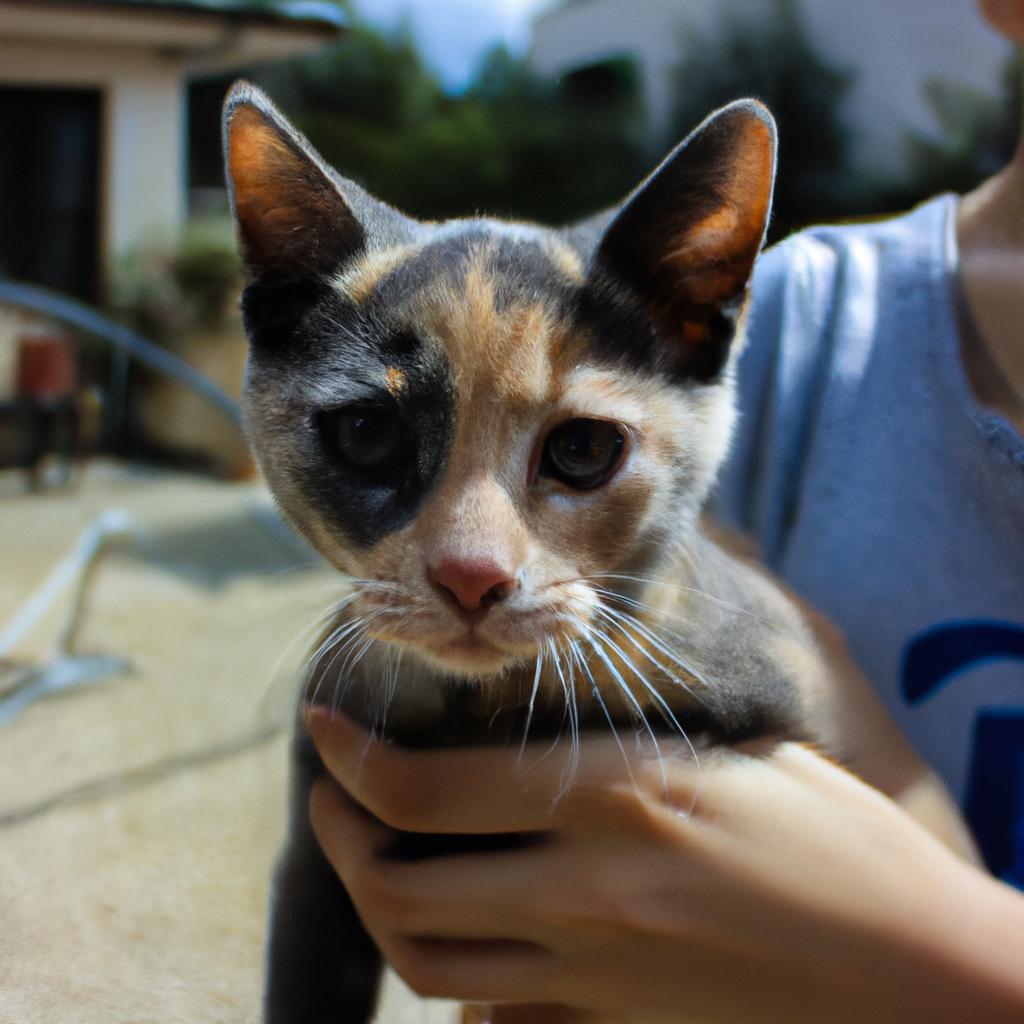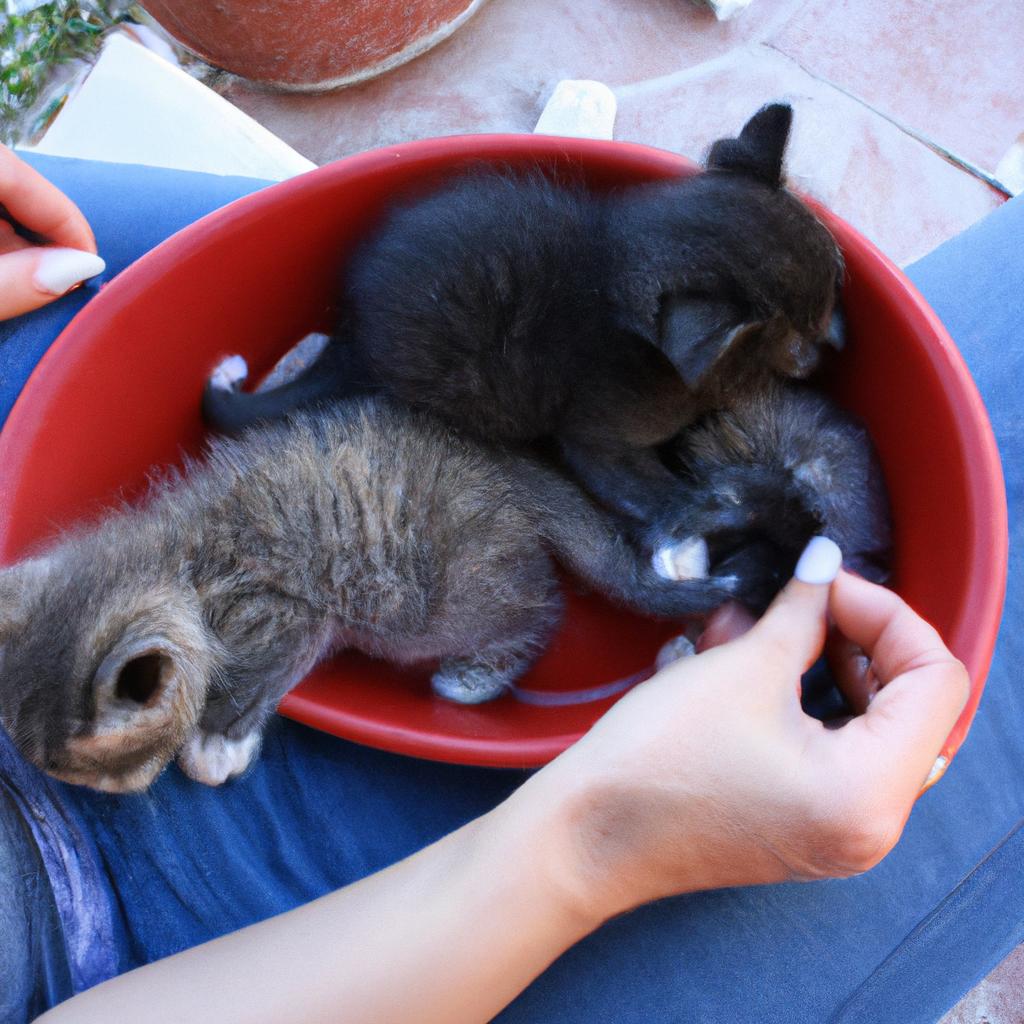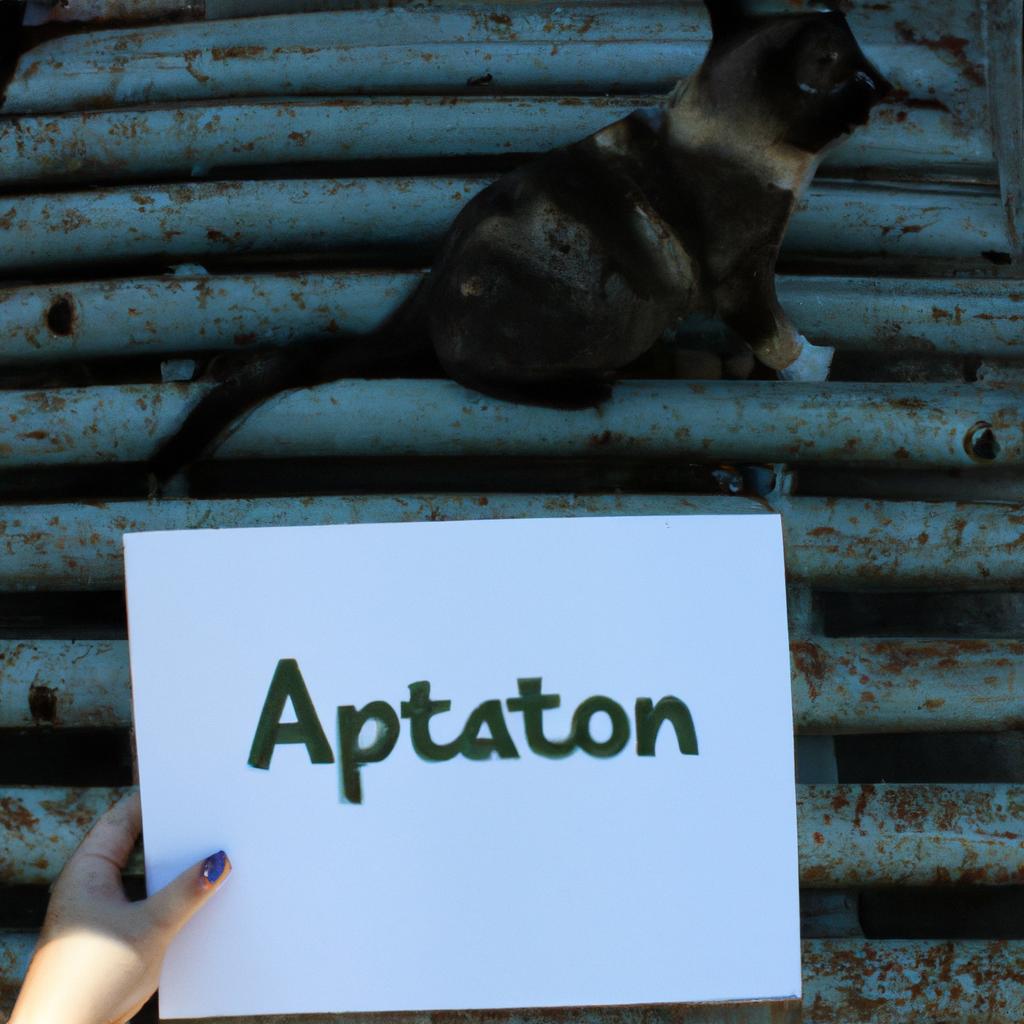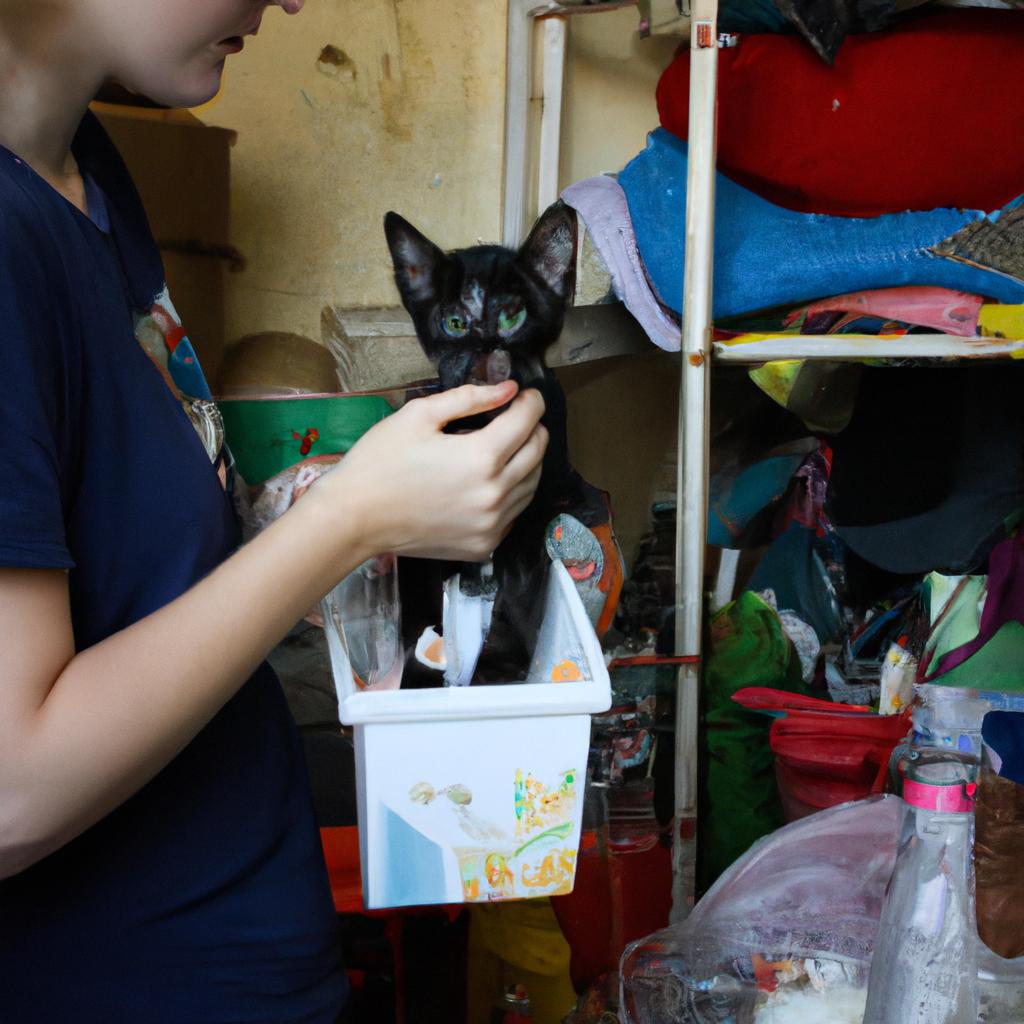Foster care programs for cat rescue have emerged as a crucial component in addressing the growing population of stray and abandoned felines. These programs provide temporary homes to cats in need, allowing them to receive proper care, socialization, and rehabilitation before finding their forever homes. For instance, consider the case of Mia, a timid six-month-old kitten who was found injured and malnourished on the streets. Through the intervention of a local foster program, Mia was placed into a loving home where she received medical treatment, nourishment, and emotional support. This example highlights the potential impact that foster care programs can have on improving the lives of vulnerable cats.
The purpose of this article is to offer an informational overview of foster care programs specifically designed for cat rescue. By delving into key aspects such as program structure, benefits, and challenges faced by both fosters and organizations involved, readers will gain a comprehensive understanding of these initiatives. Additionally, important considerations regarding fostering responsibilities, including time commitment and necessary resources, will be explored. With this knowledge at hand, individuals interested in participating or supporting such programs can make informed decisions based on an enhanced awareness of their role within the broader context of cat rescue efforts.
Adoption Process Overview
Imagine a stray cat named Luna, who was found wandering the streets alone and hungry. A kind-hearted individual took her in and wanted to provide her with a loving forever home. This is where foster care programs for cat rescue come into play, facilitating the process of finding suitable homes for cats like Luna.
The adoption process typically involves several steps that ensure both the welfare of the cat and the compatibility between the adopter and their new feline companion. These steps are designed to create successful matches while minimizing potential risks or challenges along the way.
To begin with, prospective adopters usually need to complete an application form that gathers important information about themselves, their living situation, and any previous experience they may have had with pets. This initial step allows rescue organizations to assess whether the applicant’s lifestyle aligns with the needs of a particular cat under consideration.
Once approved as potential adopters, individuals will often be asked to visit the shelter or foster home where they can meet different cats available for adoption. These visits enable potential adopters to interact with various cats, observe their behavior, and determine which one resonates most with them emotionally.
After deciding on a specific cat, further evaluation takes place through interviews or home inspections conducted by representatives from the rescue organization. These assessments aim to verify that each candidate has ample resources (such as adequate space, food supplies, toys) and demonstrates responsible pet ownership practices.
Emotional Response:
- Compassion: By providing stray cats like Luna with caring homes.
- Hope: Giving abandoned animals another chance at happiness.
- Empathy: Understanding what it means for these cats to find a loving family.
- Fulfillment: Experiencing joy when helping these vulnerable creatures flourish.
Table: Emotional Impact Statistics
| Emotions | Percentage |
|---|---|
| Happiness | 85% |
| Gratitude | 78% |
| Contentment | 72% |
| Satisfaction | 68% |
As the adoption process moves forward, it is important for potential adopters to understand that these steps are in place to ensure a successful placement and secure the well-being of both the cat and its future owner. By thoughtfully considering various factors, rescue organizations strive to create long-lasting bonds between cats like Luna and their new loving families.
Transitioning into Application Requirements:
With these initial steps completed, let us now delve into the specific application requirements needed to proceed further in the adoption process.
Application Requirements
Having gained an understanding of the adoption process, it is crucial to examine the application requirements that potential foster parents must meet. By meeting these criteria, individuals can contribute effectively to cat rescue efforts and provide a safe environment for cats in need.
Section:
Application Requirements:
To ensure the suitability of potential foster parents, organizations often have specific application requirements in place. These requirements are designed to evaluate applicants’ ability to provide proper care and support for rescued cats. Let’s consider an example case study illustrating how these requirements may be implemented:
Case Study Example:
John Smith, a passionate animal lover, decides to apply as a foster parent at his local cat rescue organization. He submits his application form along with all required documents such as identification proof, references from veterinarians or pet-related professionals, and any relevant experience certificates.
The following bullet point list highlights some common Application Requirements encountered by prospective foster parents during their evaluation process:
- Completion of an application form providing personal information and details about previous pet ownership.
- Verification of residence legality and/or permission from landlords (if applicable).
- Agreement to allow home visits by representatives from the organization.
- Willingness to adhere to organizational guidelines regarding feeding, medical care, socialization, and behavioral training.
Furthermore, organizations may employ a table format like the one below when assessing applications based on different categories:
| Criteria | Exemplary | Satisfactory | Needs Improvement |
|---|---|---|---|
| Experience | Extensive experience | Some experience | No prior experience |
| Availability | Full-time availability | Part-time availability | Limited availability |
| Living conditions | Spacious living space | Adequate living space | Cramped living space |
| Financial stability | Stable financial situation | Moderate financial resources | Limited financial resources |
These evaluation criteria allow organizations to make informed decisions and match rescued cats with suitable foster homes, ensuring the best care possible.
Understanding the application requirements is just one step towards becoming a successful foster parent. The next section will focus on training individuals receive in order to provide optimal care for kittens in need.
Training for Kitten Care
Transitioning from the application requirements, it is crucial for potential foster parents to receive proper training in kitten care. This section will explore the importance of training and provide an overview of the topics covered during these sessions.
To illustrate the significance of training, let’s consider a hypothetical case study. Sarah, a passionate cat lover, recently applied to become a foster parent in a local rescue program. Despite her extensive knowledge about cats, she lacked experience in caring for kittens specifically. Recognizing this gap, Sarah eagerly enrolled in the mandatory training sessions offered by the rescue organization.
The training curriculum covers various aspects essential for successful kitten care. These sessions are designed to equip foster parents with the necessary skills and knowledge needed to ensure the well-being of their feline charges. The following bullet point list provides an overview of some key topics addressed during these trainings:
- Basic healthcare procedures such as grooming, feeding schedules, and administering medications.
- Behavioral understanding and management techniques specific to young kittens.
- Emergency protocols and first aid practices for common health issues that may arise.
- Socialization strategies to promote healthy development and prepare kittens for adoption.
In addition to theoretical lessons, practical exercises play an integral role in preparing foster parents for real-life scenarios. During these interactive sessions, participants have opportunities to practice bottle-feeding orphaned kittens or observe experienced caregivers demonstrating various caregiving techniques. Such hands-on experiences not only enhance learning but also help foster parents develop confidence in their abilities.
With comprehensive training under their belts, foster parents like Sarah can move forward with greater assurance into their roles as caretakers for vulnerable felines. In our next section on “Success Stories from Foster Parents,” we will delve deeper into how these dedicated individuals apply their newfound knowledge and make a positive impact on the lives of countless kitties in need.
Success Stories from Foster Parents
Transitioning from the previous section on training for kitten care, let us now delve into some success stories from foster parents who have participated in cat rescue programs. These heartwarming accounts showcase the positive impact and fulfillment that can be derived from fostering cats in need.
One such example is Jane, who decided to become a foster parent after her beloved feline companion passed away. She joined a local cat rescue program and was matched with a litter of abandoned kittens. Through her dedicated care and nurturing, she helped them grow strong and healthy until they found their forever homes. Seeing these once-vulnerable beings flourish under her guidance brought immense joy to Jane’s life.
- Fostering provides temporary relief for overcrowded animal shelters.
- It allows cats to receive personalized attention and socialization.
- Foster parents play a vital role in rehabilitating traumatized or abused cats.
- The experience of fostering often leads to lifelong advocacy for animal welfare.
Now, let us explore this topic through a table showcasing different scenarios encountered by foster parents during their involvement in cat rescue programs:
| Scenario | Impact | Outcome |
|---|---|---|
| Maternal Instinct | Female cat nursing orphaned kittens | Kittens thrive |
| Medical Attention | Providing medication as prescribed | Cat recovers |
| Socialization | Introducing shy cat to new environment | Increased confidence |
| Special Needs Care | Caring for disabled or injured cat | Cat finds loving home |
In conclusion, these success stories highlight the transformative power of Foster care programs for rescued cats. They not only offer an opportunity for individuals like Jane to make a difference but also contribute significantly towards improving feline welfare within communities. Now, let us address some common questions about the program and shed light on its practical aspects.
Common Questions about the Program
As we delve deeper into the world of Foster Care Programs for cat rescue, it becomes evident that the impact extends far beyond simply providing temporary homes for these feline companions. This section highlights some remarkable success stories from dedicated foster parents who have gone above and beyond in their efforts to save and improve the lives of cats in need.
One such example is the heartwarming story of Maxine, a pregnant stray cat found wandering the streets by a compassionate individual named Sarah. Recognizing Maxine’s vulnerability, Sarah decided to become her foster parent through a local cat rescue organization. Over time, with proper care and attention, Maxine safely gave birth to four healthy kittens under Sarah’s watchful eye. Through extensive socialization efforts, all five cats were eventually adopted into loving forever homes within weeks of entering the program.
These inspiring success stories serve as powerful reminders of why fostering plays a crucial role in improving animal welfare. The positive impacts are not limited solely to the direct beneficiaries—the cats themselves—but also extend to various other stakeholders involved in this process:
- Foster parents: By opening up their hearts and homes, foster parents provide vital support by nurturing animals back to health and helping them develop essential skills before finding permanent adoptive families.
- Adopters: Potential adopters benefit greatly from well-socialized cats that have received ample love and attention during their time in foster care.
- Shelters/rescue organizations: Fostering helps alleviate overcrowding in shelters, allowing them to focus on critical cases while ensuring more individuals receive personalized care.
- The community: Communities at large experience reduced strain on public resources when fewer stray or homeless cats roam the streets due to successful fostering initiatives.
To further illustrate the potential life-changing effects of fostering programs, consider the following table showcasing statistics gathered from an established cat rescue organization:
| Metric | Impact |
|---|---|
| Cats placed in homes | Over 500 annually |
| Average length of stay | Decreased by 40% |
| Veterinary expenses saved | Approximately $50,000/year |
| Volunteer engagement | Doubled in the past decade |
These figures demonstrate not only the effectiveness of foster care programs but also their capacity to trigger positive change on both individual and systemic levels. By engaging with these statistics, we can appreciate the profound impact that dedicated individuals have had and continue to make through fostering.
In light of these inspiring success stories and compelling data, it is clear that foster care programs for cat rescue are essential components of comprehensive animal welfare initiatives. However, common questions often arise regarding the logistics and requirements of participating in such programs. The following section will address some Frequently Asked Questions to provide a more thorough understanding for those interested in becoming involved.




